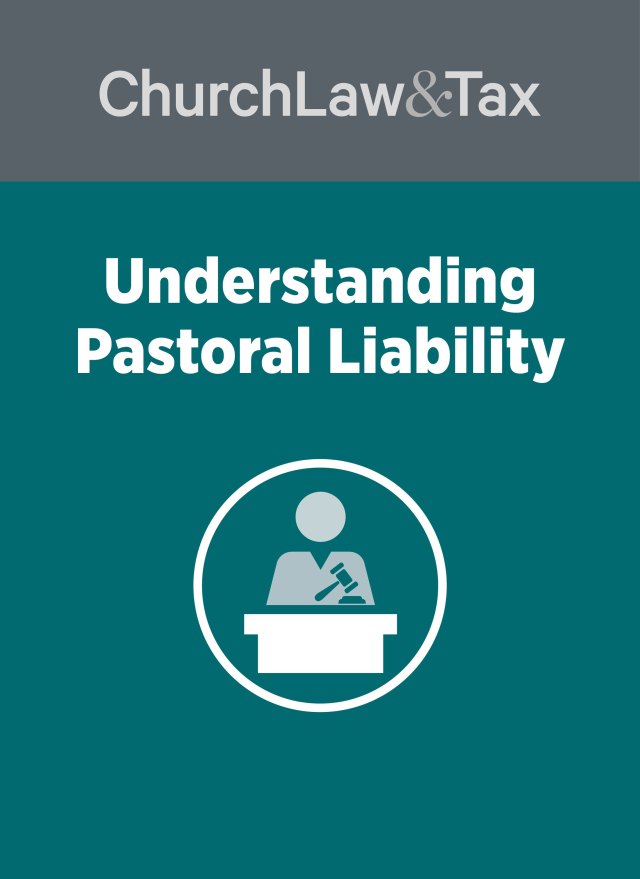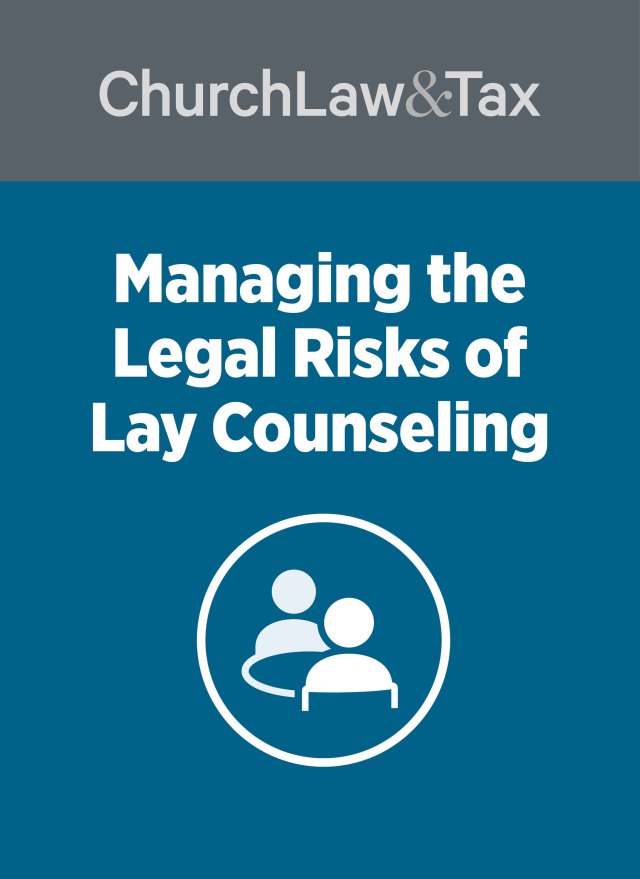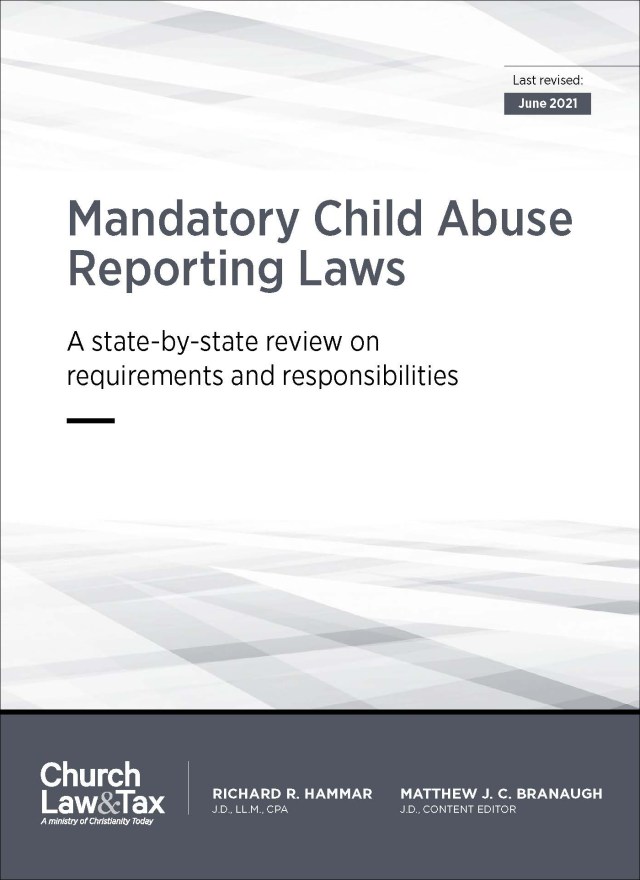• Key point 10-16.4. The statute of limitations specifies the deadline for filing a civil lawsuit. Lawsuits cannot be brought after this deadline has passed. There are a few exceptions that have been recognized by some courts: (1) The statute of limitations for injuries suffered by a minor begins to run on the minor’s 18th birthday. (2) The statute of limitations does not begin to run until an adult survivor of child sexual molestation ‘discovers’ that he or she has experienced physical or emotional suffering as a result of the molestation. (3) The statute of limitations does not begin to run until an adult with whom a minister or church counselor has had sexual contact ‘discovers’ that his or her psychological damages were caused by the inappropriate contact. (4) The statute of limitations is suspended due to fraud or concealment of a cause of action.
* A federal appeals court ruled that the statute of limitations prevented an adult male from suing a church as a result of injuries he allegedly suffered as a result of being sexually molested by a teacher at a church-operated school when he was a minor. Matt was born in 1964. He claimed that when he was 12 to 15 years old and enrolled as a student at a church-operated school, he was sexually molested by a male teacher on numerous occasions. As a result of the abuse, Matt suffers from several emotional and psychological disorders as well as problems with interpersonal relationships.
In 1990, Matt disclosed the abuse to his wife and parents, after grappling with marital problems stemming largely from his homosexual behavior. The next year, he made an anonymous report of the teacher’s wrongful conduct to the school principal, warning that any ‘special young friends’ of the teacher might be suffering sexual abuse. The principal, who was also suspected of molesting students, committed suicide a few years later.
In 1995, Matt discussed the abuse with a licensed professional counselor. The counselor’s notes indicate that Matt told her he had sought counseling about the sexual abuse in 1991. The counselor advised Matt that there was a strong possibility that the sexual abuse he had suffered as a child was contributing to his current problems.
In 2002 Matt hired an attorney who wrote a letter to the school seeking compensation for his injuries. When the school failed to meet Matt’s settlement demand, Matt’s attorney filed a lawsuit in federal district court. The court dismissed the case on the ground that it was not filed by the deadline prescribed by the statute of limitations.
A federal appeals court affirmed the dismissal of Matt’s lawsuit. It noted that Nebraska law applied, and that Nebraska’s statute of limitations in personal injury lawsuits was four years, except of injuries to minors (the four year statute of limitations does not begin to run until they reach age 21). The court noted that Matt reached the age of 21 in 1985, but he did not file this lawsuit until 2002, some seventeen years later. Matt insisted that the four-year statute of limitations did not begin to run until he discovered a connection between the abuse and his problems, which happened less than four years prior to the time he filed his lawsuit. The court rejected Matt’s argument, and ruled that the statute of limitations barred his claims. It acknowledged that Nebraska recognizes a ‘discovery rule’ that suspends the statute of limitations ‘in certain cases where the injury is not obvious and the individual is wholly unaware that he or she has suffered an injury or damage.’ But, it concluded that the discovery did not apply to Matt:
The undisputed evidence demonstrates that Matt drew a direct connection between the abuse and his negative behaviors in 1990, when he disclosed the abuse to his wife and parents as an explanation for his marital discord and homosexual activity ….The remaining undisputed evidence indicates that Matt was aware of sufficient facts by 1995 at the latest, from which he could have, with reasonable diligence, discovered the causal connection. By that time, he had told not only his family, but also friends, counselors, and the school principal about the abuse he had suffered; he was aware of his emotional and behavioral problems; and [his counselor] had expressly suggested to him in counseling that there was a strong possibility that the sexual abuse he had suffered contributed to his current problems. These undisputed facts, all known to him by 1995, were sufficient to put a person of ordinary intelligence and prudence on an inquiry which, if pursued, would have led to the discovery of the connection between the abuse and the injuries. The fact that he may not have actually drawn the connection at that point or may not have understood the extent of his damages did not prevent the statute of limitations from running.
The court also rejected Matt’s argument that the statute of limitations should have been suspended because he was suffering from a mental disorder. A psychologist who examined Matt prior to trial diagnosed him with moderate to severe posttraumatic distress disorder and other disorders that prevented him from pursuing his legal rights. The court concluded that Matt’s disorders were ‘not the type of mental disorders that are contemplated by the statute, because they do not render him incapable of understanding his legal rights or instituting legal action ….
Persons with a mental disorder sufficient to justify the tolling provision are not able to evaluate and communicate information necessary to protect their rights. It is undisputed that Matt was able to communicate the facts of his abuse and evaluate at least some of its effects on his life since at least 1990, when he began telling others of the abuse and seeking counseling.’
Application. Many states have adopted a ‘discovery rule’ that suspends the statute of limitations in sexual abuse cases until the victim ‘discovers, or with reasonable diligence should have discovered, the injury.’ As this case illustrates, the discovery rule will not salvage a lawsuit brought by a victim of sexual abuse if it can be proven that he or she was aware of a connection between the abuse and the subsequent injuries at any time longer ago than the applicable statute of limitations. Kraft v. St. John’s Church, 414 F.3d 943 (8th Cir. 2005).
Copyright © 1994 – 2006 Christianity Today International.All rights reserved. This publication is designed to provide accurate and authoritative information in regard to the subject matter covered. It is provided with the understanding that the publisher is not engaged in rendering legal, accounting, or other professional service. If legal advice or other expert assistance is required, the services of a competent professional person should be sought. Church Law & Tax Report, A publication of Christianity Today International, 465 Gundersen Drive, Carol Stream, IL 60188.




